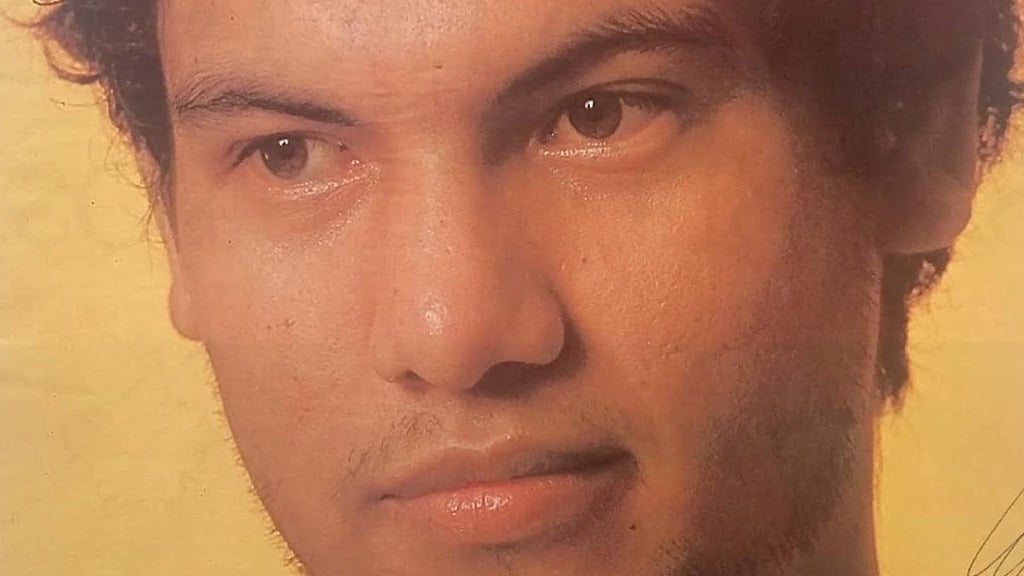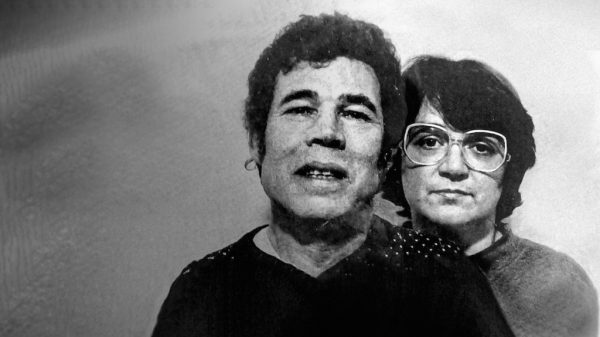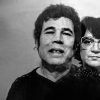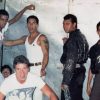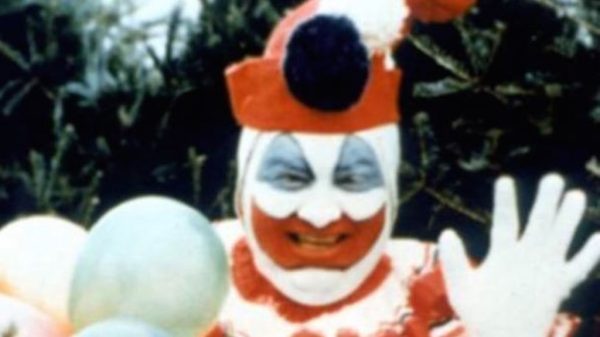Text by James Marrison via Monstrous.com
Ex-rentboy turned religious maniac Marcelo Costa de Andrade made headlines in 1992 when he confessed to a nine-month murder spree. Brazil’s most infamous killer said he raped and slaughtered 14 boys from the slums of Rio so they “would go to heaven.”
A million and a half people live in the slums of Rio de Janeiro. The most notorious ghetto is Rocinha, which sprawls down the hillside and overlooks the elegant high-rises of So Conrado and some of Brazil’s most spectacular beaches. Perhaps nowhere in the world is the disparity between the haves and have-nots more striking than here, and nothing a more potent reminder than the thousands of homeless kids who constantly roam its streets.
Rocinha has an estimated population of 200,000. Armies of children maraud their way through its labyrinthine alleyways, and youngsters die in the shantytown in such numbers that Brazil has been compared to a country at war.
Between December 1987 and November 2001, 3,937 children died violent deaths — the majority victims of an ever-escalating drug war that has been raging in the slums since the cocaine trade took hold there in the early 1980s. Employed as ‘soldiers’ by drug lords to protect and expand their turf, armed teenagers murder each other in pitched battles, and innocent bystanders get caught in the crossfire almost every day.
Those who don’t run drugs are forced to survive any other way they can. They scavenge for food, sell gum, polish shoes, beg, steal, mug people… and sometimes kill. Blamed for the spiraling crime rate, and for making Rio one of the murder capitals of the world, the children find very little sympathy among the citizens of Rio. Universally shunned and despised, they are routinely beaten, abused, and attacked.
The situation was made even worse in the 1990s when they were regularly being picked off by roving extermination squads. Made up in the main of off-duty policemen and security guards, the squads were on the payroll of normally law-abiding citizens, and their mission was to clean up the streets. In 1991, at least four children were being executed every day.
For a murderer, especially one with a liking for young boys, the conditions on Brazil’s streets could not have been more ideal. Such was the daily death toll the Brazilian authorities didn’t even notice that somebody else, acting on their own, was slaughtering young boys in the slums.
For Marcelo Costa de Andrade, who had spent almost his entire life on the streets, it wasn’t difficult to blend in and lure the children away from prying eyes to abandoned spots and their slaughter. While the children from the Rio slums were wary of the dangers that constantly surrounded them, De Andrade seemed to be one of the few adults they could trust. With a harmless appearance, a gentle manner, and a soft, childlike way of speaking, the 23-year-old lived with his mother, regularly attended church, had a normal job, and when talking to children made constant allusions to his faith in God.

Growing up poor in the Rocinha slum, De Andrade’s childhood was in many ways the same as that of the street kids: no food on the table, no running water, constant abuse, and hardly any school. De Andrade spent most of his time on the street hustling and was just 10 when he ran away from home for the first time. At 14, he started selling himself to adults for sex.
On the rare occasions he was at home, De Andrade was beaten senseless by both his step-parents, and was sexually abused. At 16, he moved in with an older man, but when he was thrown out he went to live with his mother in another nearby Rio slum. Aged 17, he tried to rape his 10-year-old brother and started listening obsessively to tapes he had made of his brother crying.
But it was when he had left hustling for good and was attending church regularly with his mother that his killing spree began. According to De Andrade, it was an encounter with a young transvestite that was the trigger. And once he’d begun there was no stopping him.
“One day when I was walking I met a 14-year-old boy. A transvestite,” De Andrade recalled in an interview with Epoca magazine in 2003. “He propositioned me to go to a hotel with him. I had sex with him and kissed him on the mouth. I paid him 50 Reais [£12]. I never got to see him again. But it sparked the desire for new boys. As I didn’t find another one like him I ended up forcing myself on others. I always took them to a deserted spot.
“The sadism went to my head. I ended up killing some of them… I do not remember their faces very well. The first one I caught was in Niteroi. I only know that his name was Anderson. I offered him money. I said he could help me light candles in the church. I took him to a deserted place. When we got there I raped him. I then strangled him with his own shirt. I returned to the spot where the body was three times, to see if anyone had discovered anything. Nobody ever suspected me.”
De Andrade went on to murder 13 other street kids, following the same pattern as the first. He lured them with sweets and money to secluded spots, raped them, strangled them or beat them to death, and had sex with their corpses. He then buried them in shallow graves.
In two instances he drank their blood. After sexually abusing his victims, often for an entire night, he would crack their heads open and collect the blood in a bowl to drink. De Andrade carried the bowl with him everywhere he went. He drank their blood so that he would be “as young and cute as them” and killed them so they “would go to Heaven.” He also removed his victims’ shorts and kept them as trophies. De Andrade targeted the “prettiest boys” he could find, always hunting for “smooth legs, and a pretty face and body.”
But there was also a religious motive for his murders. The church he attended was the controversial Universal Church of the Kingdom of God. Founded by a state-lottery employee turned American-style evangelist, Edir Macedo, it is the fastest-growing religion in Brazil.
As well as offering protection from voodoo and witchcraft, the church claims that ‘demons’ are responsible for people’s problems (including homosexuality, which is viewed by the church as a disease). De Andrade’s church would cast out these ‘demons’, and to this day the murderer claims he was possessed by evil spirits who forced him to kill because “they like children’s blood.”
In the midst of his killing spree, the devout De Andrade was going to church four times a week, for up to five hours at a time. De Andrade claimed later that a priest had told him that boys who died under the age of 13 automatically went to heaven. He misunderstood the priest’s message, interpreting it as meaning that by killing the boys he was not only ending their awful existence in the slums but also ensuring them a one-way ticket to paradise.
It was for this reason that De Andrade never targeted girls. Girls, he claimed, were different from boys because they didn’t go to heaven and, of course, boys were “prettier.”

Dr Helen Morrison, a forensic psychiatrist and well-known profiler, went to interview De Andrade in Brazil in November 2001. She recounts the experience in her book My Life Among the Serial Killers: Inside the Minds of the World’s Most Notorious Murderers. Through an interpreter, De Andrade reiterated his claim that he had been doing his victims a favour by killing them. “The children have bad lives here,” he told her. “If they are children when they die they go to heaven. A better place.”
But De Andrade went much further than gently sending them on their way. After raping and killing 11-year-old Odair Jose Muniz, whom he had met near a football pitch, he returned later in the night with a machete, which he told his mother he was taking to cut some bananas. Back at the scene of the crime, he hacked the boy’s head off. “Why?” asked Morrison. In order, De Andrade told her, that the other children in heaven would make fun of him because he wouldn’t have a head. After all, the kids used to make fun of him at school.
De Andrade’s killing spree was prolific but mercifully short-lived. According to Morrison’s account of the case, on 11 December 1991 brothers Altair (10) and Ivan Abreu (six) were picked up by De Andrade, who offered them $20 if they both accompanied him while he lit candles in a nearby church. The boys readily agreed. But as soon as they were away from public view, De Andrade turned on Altair and made to kiss him. Altair tried to run, but his molester was too quick for him, grabbing the boy and throwing him to the ground.
Then he turned his attention to Ivan and started strangling him. “I was so paralysed by fear I could not run away,” Altair later recalled. “I watched in horror, tears streaming down my cheeks, as he killed and then raped my brother.”
When it was all over, De Andrade moved towards Altair, opening his arms wide. According to Morrison, the terrified boy could smell his dead brother all over De Andrade’s clothes and was convinced the monster looming above him was going to kill him. Instead, De Andrade embraced him. “I have sent Ivan to heaven,” the killer told him. “I love you.”
Too terrified to try and make a run for it, Altair agreed to spend the night with De Andrade, sleeping rough in the bushes behind a petrol station. The next morning, De Andrade even took the boy to work with him in the tourist district of Copacabana. However, Altair managed to escape and find his way home. He told his mother what had happened and De Andrade was arrested two days later.
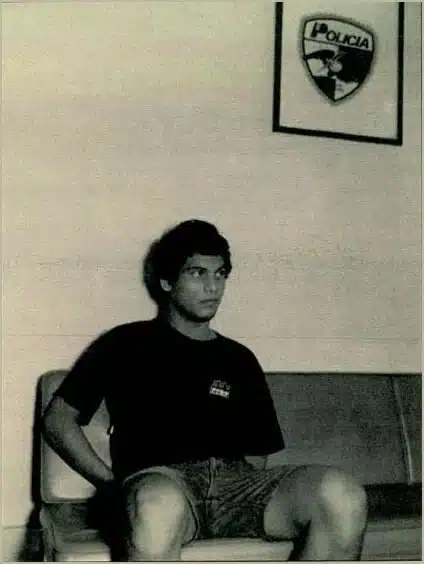
In the meantime, the killer, who often revisited the scene of his crimes and left trays of food and other offerings to his victims, had returned to Ivan’s corpse to tuck the tiny boy’s hands into his pockets so the rats wouldn’t chew on his fingers.
Instead of making a run for it, De Andrade carried on as if nothing had happened, and was arrested at work in Copacabana, where he handed out fliers for a jewelry shop. Initially, he confessed to only the murder of Ivan, but when his mother was called in for questioning two months later, she reluctantly told police about how her son had once asked for the use of her machete and had come back the next morning with it smeared in blood.
De Andrade finally confessed to 13 other murders and led police to the burial sites. Declared insane on 26 April 1993, the murderer was placed in the Heitor Carrilho psychiatric hospital in Rio. He is evaluated annually; each year since then, he has been declared insane.
Bizarre talked to Ilana Casoy, an expert on Brazilian serial killers, who has met and interviewed De Andrade many times. Casoy is well known for her work as a profiler in the investigation into Brazil’s most prolific serial killer, Francisco das Chagas Rodrigues de Brito, who killed and castrated 42 boys over a 12-year period.
“Many serial killers in Brazil kill children, but each one has their own way of doing it,” Casoy explains. “Each one of them has his own fantasies and symbolism, his own ritual way of killing someone. But my meeting with De Andrade was different to my meetings with other killers in many ways, because by meeting him I could really understand what it is to be an insane person. De Andrade has this mental illness and you get the feeling he doesn’t know the true scale of what he did, the difference between right and wrong. There is no cure. Nobody knows what treatment he should receive, so they give him drugs to keep him under control, and that’s about all they can do.”
In her chapter on De Andrade in Serial Killers: Made In Brazil, Casoy changed the names of his victims to biblical names, so the mothers who read it would never know which child was their own. While she has met and interviewed some of Brazil’s worst serial killers, meeting Andrade is something Casoy will never forget:
“Meeting someone like Marcelo Costa de Andrade is very hard for any human being. I was sick in bed for four days after I talked to him. He is like a wolf dressed in sheep’s clothing. Look at him and you would never for a single second imagine what he is capable of doing with children. As soon as he told me that he took the shorts off every child he killed and kept them as trophies he asked me to bring him a gift – a pair of new shorts. I’d never give them to him. I hope he stays in the lunatic asylum for his entire life.”
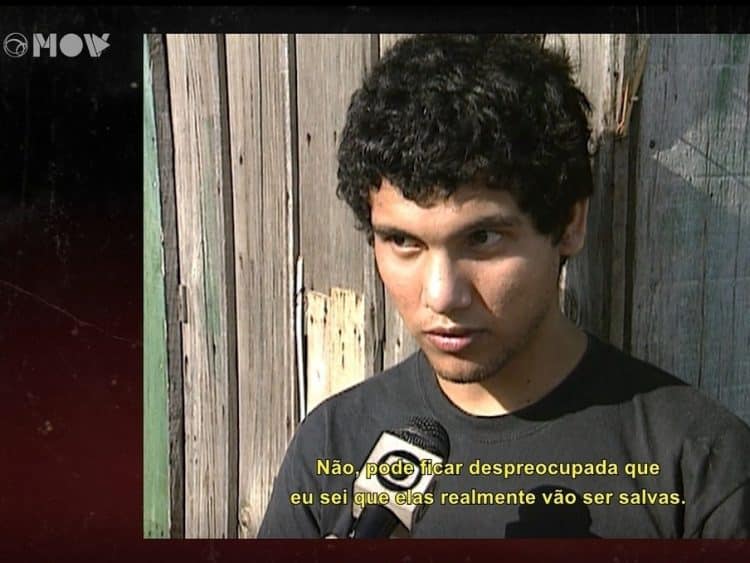
De Andrade managed to escape from the asylum in January 1997 when a guard accidentally left a door open. He was on the run for 12 days until frantic police finally managed to catch up with him in the town of Guaraciaba do Norte in the northeastern state of Ceara. He had managed to hitchhike his way more than 3,000km to visit his father and was, when he was picked up, “on his way to the Holy Land.” He told police that by killing the children he was now purified.
De Andrade now resides in the Henrique Roxo hospital in Rio de Janeiro. He claims to be an evangelist and expresses his hope that one day he will be back on the streets. All he needs, he says, is the love of a good woman to keep him on the straight and narrow. He asks God to light the way. But according to Casoy, his so-called religious convictions are a sham.
“De Andrade is not a religious guy and he never was,” she said. “He just heard a priest who said that a child under 13 years old goes straight to paradise if he dies without sins. He believed it literally.”
As one of Brazil’s sickest criminals, De Andrade relishes his moments in the spotlight and has been known to demand Hollywood-level fees for interviews. ‘The Vampire of Niteroi’, as he is sometimes known, even phoned up Dr. Morrison in her hotel room in Sao Paulo in 2001 and demanded $10,000 for an interview, a request Morrison flatly refused.
Now that his fame is fading, and his exploits have been outdone, De Andrade, according to Casoy, loves talking with anyone who pays him attention. His mother is the only relative who visits him, and that’s only once a year. He shows absolutely no remorse.
“His mind is more or less the same as that of a 12-year-old,” says Casoy. “He dreams of going to Disneyland or Moscow, winning a million dollars, and having plastic surgery on his face so he would never be recognized by anyone. He never feels bad about what did, just worried that it screwed up his life. He wasn’t happy telling me what he did, but he wasn’t sad about it either. It’s something that doesn’t make any difference to him either way…
“He believes he was utterly tender to the children he killed and saved them from hell. He doesn’t know it was really wrong or awful. He told me all of it as if he was talking about simple everyday things, but with specific and cruel details, and the tone in his voice never changed — never changed for a single moment.”
